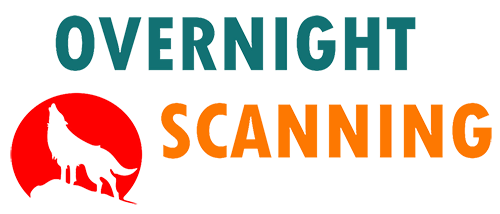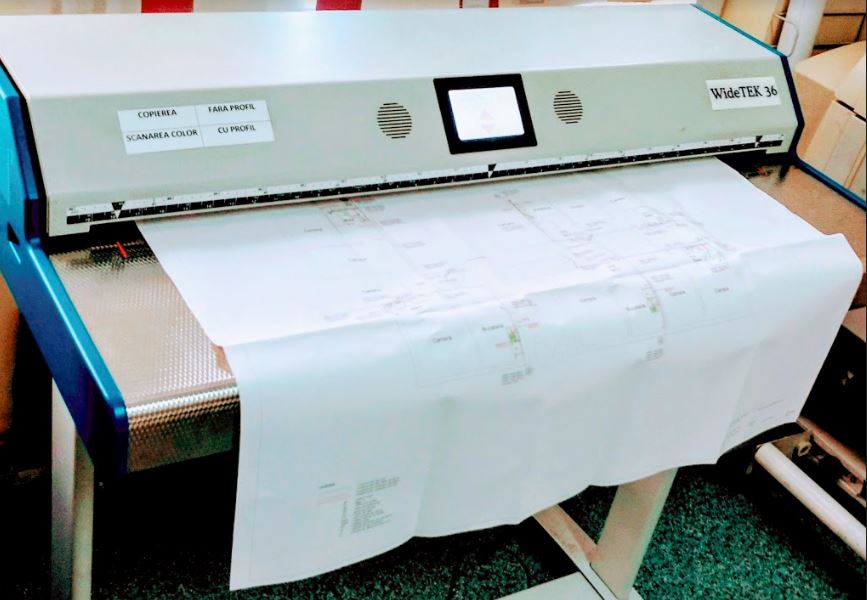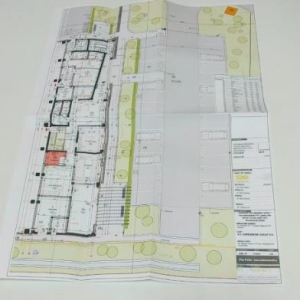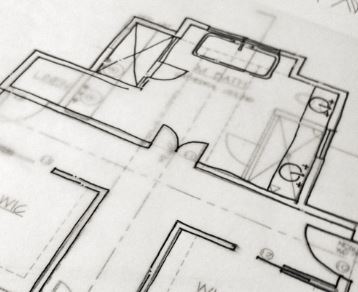To scan large documents, sometimes it can seem intimidating. We’ve all had that very long sheet of paper in front of us, wondering how we can convert it to a digital file format.
It is possible to scan wide format documents to PDF, TIFF or JPEG.
Yes, this is possible, and it isn’t that difficult as it might seem. Whether you need a high resolution or a lower one for small file size, we will take you through the process.
Or, if you want us to do it for you, please use the contact form below.
How can I approach large format scanning?
There are some ways you can do it, but we will try and give you the basic solutions:
- The best way would be to get a large format scanner.
- If you don’t want to buy one, just go to a service provider for large format scanning.
- The most difficult would be to scan it on a normal copier machine part by part, and then stitch the image.
The best way to scan large documents
Follow these 4 steps to scan large documents:
- Prepare your large document. Unfold it carefully and make sure it’s flat.
- Align it carefully on the scanner and make sure it goes straight through the scanner.
- Check the scanned image for any possible quality issues. If there are any issues, rescan the document to correct them.
- Once your image is perfect, you can now fold back the document and send it back to storage.
Preparing for the scanning of long documents
To scan large documents you will face a more difficult task than for standard size documents like A4 or A3. It will be more difficult to move them around the scanning room. At the same time, they might be folded or have many creases. In some cases, they may even be falling apart.
In such cases, we inspect the paper first. We check for weaknesses or where there might be broken paper. Special document tape is required to fix the document without affecting the visibility of the details.
At the same time, we make sure it will go through the scanner ok. Because of folds or cracks, it might get stuck in the scanner causing more damage than the initial one. Also, we sometimes try and flatten the folded plans before sending them through the scanning equipment.
Scanning the large paper documents
This step is as good as the first one. If you have taken care of the plans and drawings in the preparation phase, there should be no issue with the scanning. Sometimes you might inspect finer details, but as long as your scanner is ok, there should not be any problems.
Choosing the resolution for the scanning
We mostly scan at 300dpi optical resolution. Provided the scanner manufacturer is an honest one, 300dpi will mean 300 dpi. Some manufacturers use interpolation, but that is not very good for you. The actual scanning resolution might be very low.
We have seen cases with some of our customers that were using other vendors. We checked their scans and it was in fact 150dpi. This was because the service provider was scanning at 300dpi not knowing in fact that the manufacturer of his scanner lied to him about this aspect. When this does happen, it is not the service provider at fault, rather than the seller of his equipment.
Bitonal, Grayscale or Color Scanning
While this seems pretty straightforward most of the times it isn’t. We have seen cases in which a customer wanted bitonal scanning but he wasn’t satisfied with the output. So they came to us, saying that their service provider was not doing a good enough job.
When we saw the documents, we immediately knew the issue.They were trying to scan drawings with fills in black and white. While a line drawing can be easily scanned in monochrome, a drawing with fills needs at least grayscale scanning. To sum it up, scan lines in monochrome and lines with fills in grayscale.
For color scanning, things should be easier. Although we do suggest you always make sure about ICC profiles and color accuracy. This is very important for posters and scanning large artwork. We will be publishing an article on how to scan large artwork very soon. At the same time, it could be a problem even with architectural drawings. So make sure you talk about this with your vendor.
This aspect is especially important for map scanning services. Maps usually require a great deal of color accuracy, therefore choosing color or grayscale is critical to be able to deliver a good result. The cost to scan documents is also related to the tonal value. Color scanning will cost more than bitonal or grayscale scanning.
You can check our image processing page, to see what is possible after we scan your documents. We offer image improvement services also for scans made by other service providers.
Scanning large transparencies
Sometimes you might need to scan your transparent documents. These are mostly engineering or architectural drawings. Most of these drawings are only lines. Very rarely you see transparencies with fills or even color details.
Therefore, we suggest scanning transparencies in monochrome. This will provide the best contrast for your drawings. In the rest of the cases, we use a special white background plate which helps us scan transparencies in grayscale or color. This is probably the best way to scan large documents with a high level of transparency.
Digital file formats for large documents
When you scan a document that is longer, you need to choose the appropriate file format. Most customers go with the classic PDF format. This makes it easy to read in most scenarios, whether phone or PC. Such a file format is also easy to reprint.
Alternative file formats are JPEG and TIFF. The requirement for such files is in cases when designers or engineers want to modify drawings in Photoshop or other editing software. There is also another case, in which customers want to integrate the documents into their content management system. Such systems sometimes only work with JPEG or TIFF.
Other file formats, or indexes as we call it, are CSV and XML. Such files have metadata from the drawing which they associate with the image file format. In such cases, users can search drawings in their ECM systems, just like a normal text search, like with Google.
Also, we can get your long documents scanned and emailed to you if you are not using advanced ECM solutions. This is probably the classic approach to a large scanning service so we are keeping such a service available to our customers.
Large format printing of scanned documents
- It is possible for us to scan large drawings and reprint them. Besides large format document scanning services we also offer reprinting and copying for those files.
- To print and scan oversized documents you need a large format printer that is both in color and bitonal. When you want to print and scan a lot of documents at once, the printer has to be a production one, to successfully handle the workload.
- Wide format scanning services are not enough most of the times. Most customers will want reprints or copies of damaged long documents, therefore large format printing has to be available.
Scanning long documents with us
- We have vast experience with large format documents. We have scanned and printed over a million such documents in the last years.
- Our scanning system can convert documents that are over 10m long. So we can also offer you services for non-standard requests.
- The file formats we will provide are PDF, TIFF, JPEG. If you request different specifications for large format scanning services feel free to contact us.
- Last but not least, we can also reprint your documents if you require. This way you can save time and effort on searching for different providers.
- Large document scanning services have been provided successfully by our company for a lot of customers in the last 20 years.
- This also allows us to scan a lot of documents fast. You won’t have to research on how to scan large amounts of documents. We will all the information for this.
If you would like to know more about this service, head to our Large Format Scanning Page. If you want more information from us, please contact us directly.










